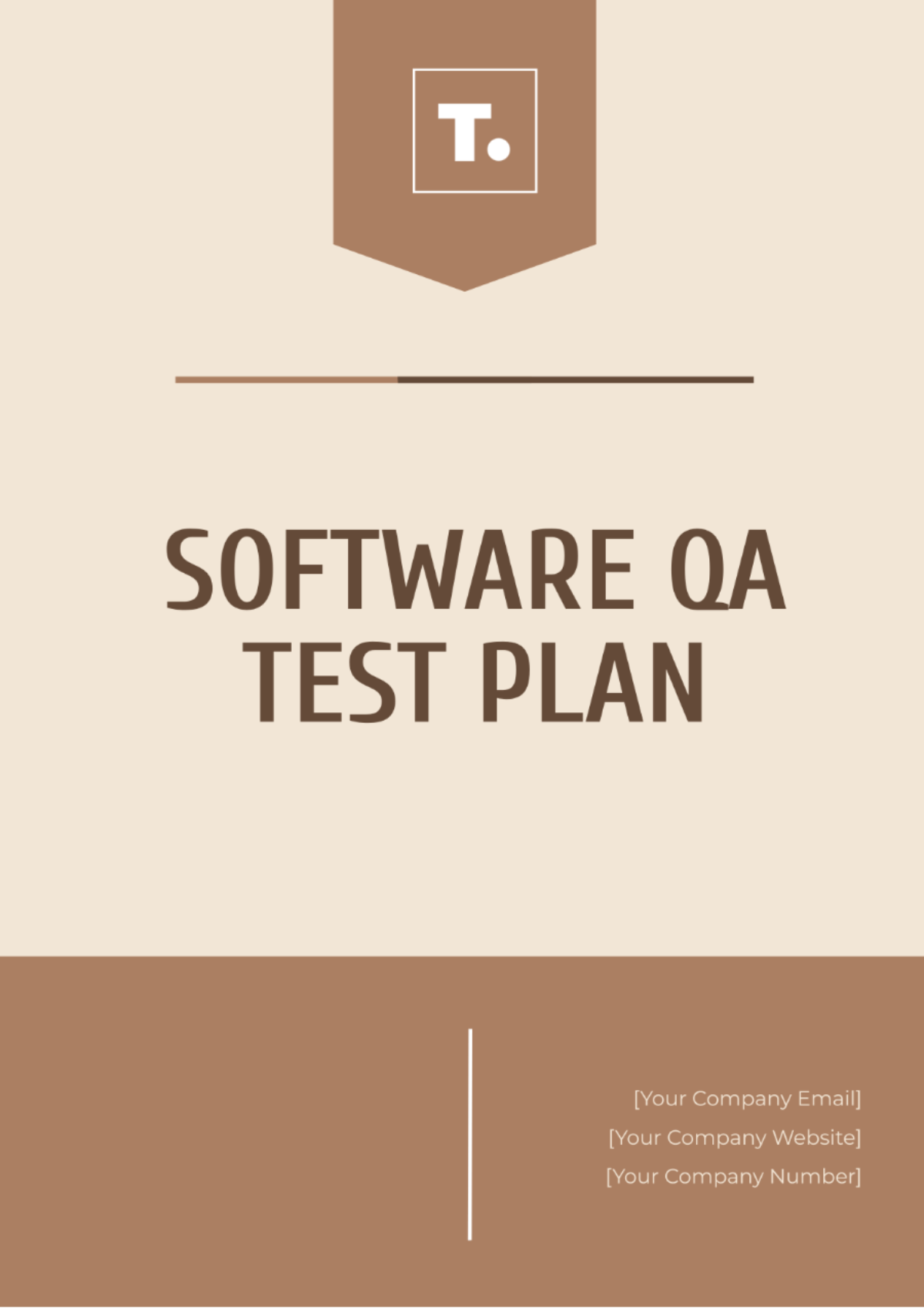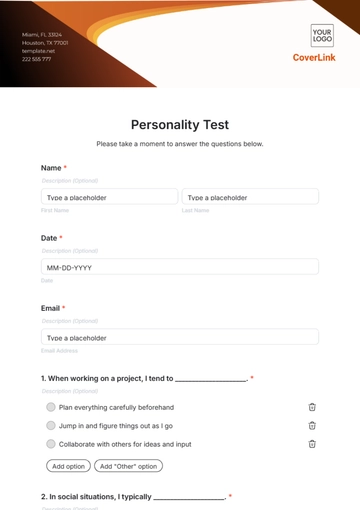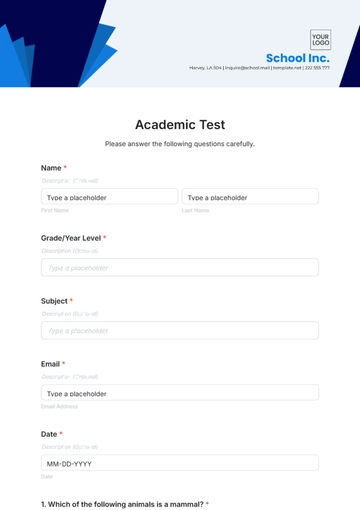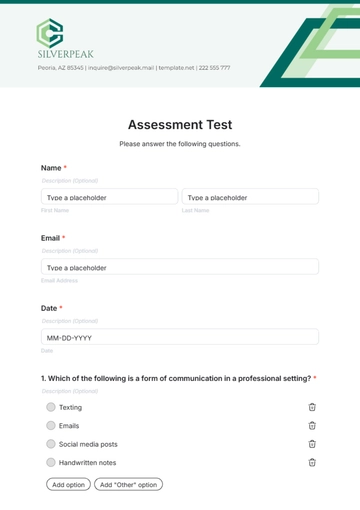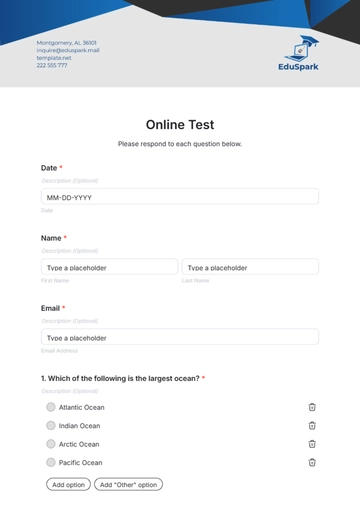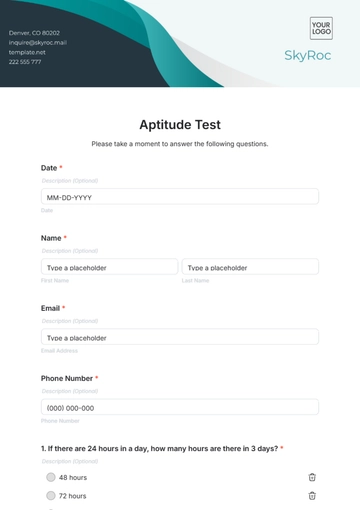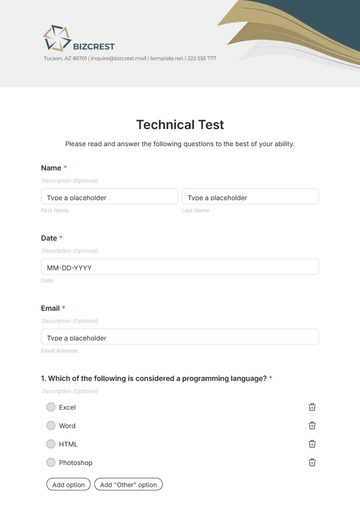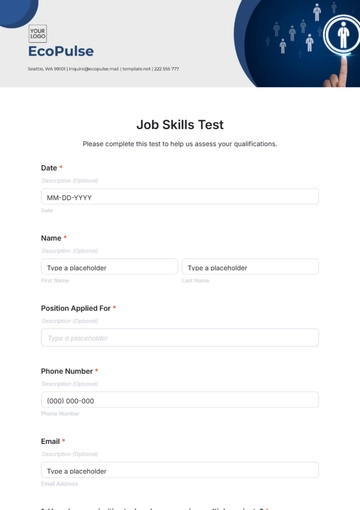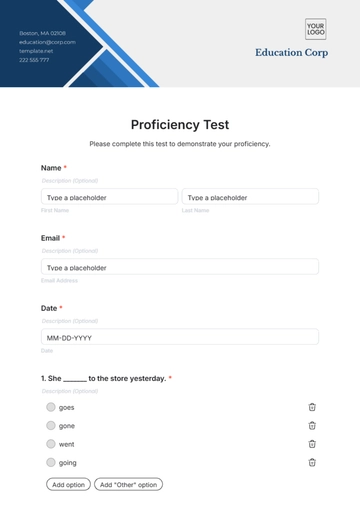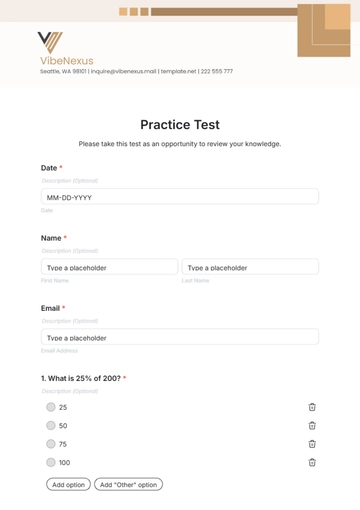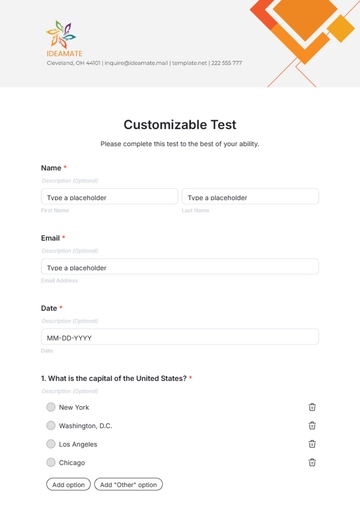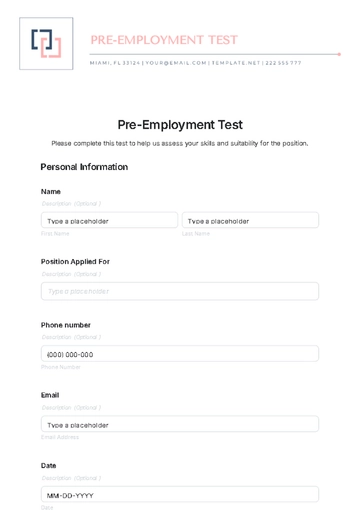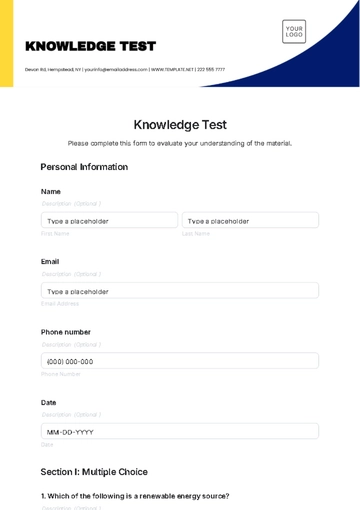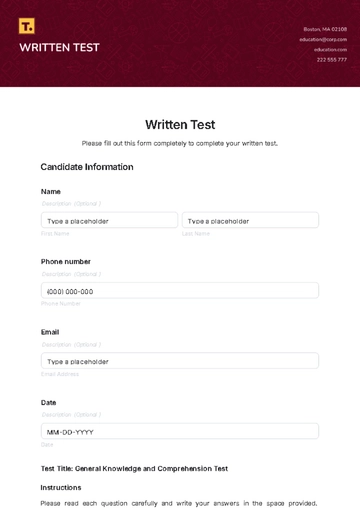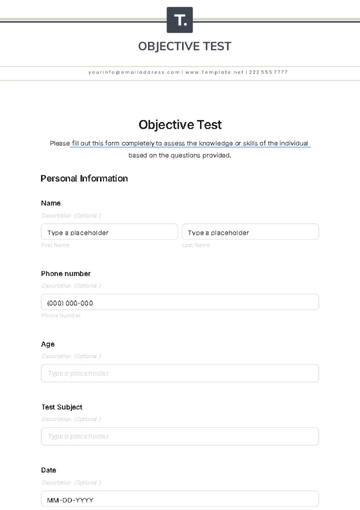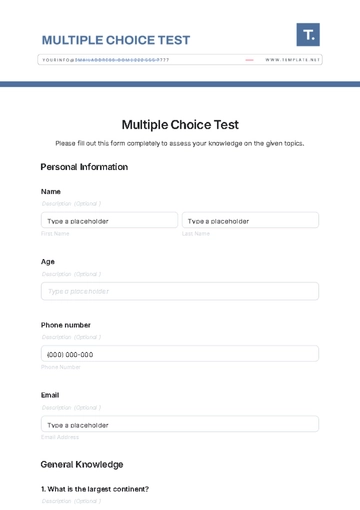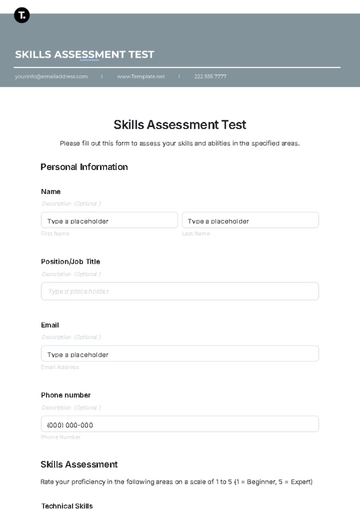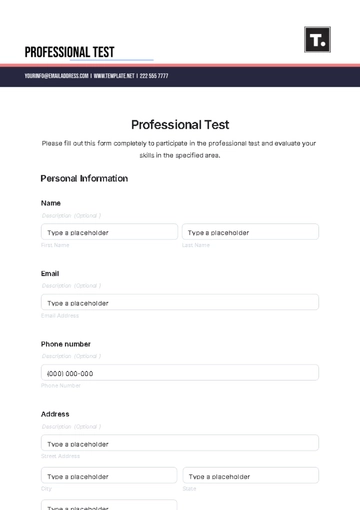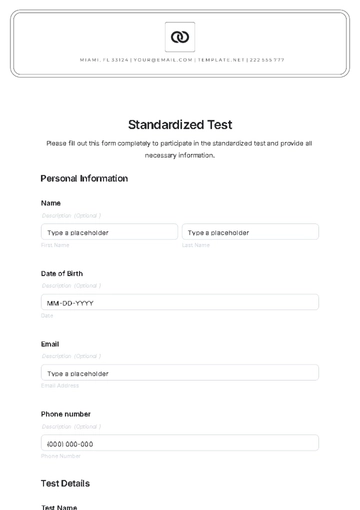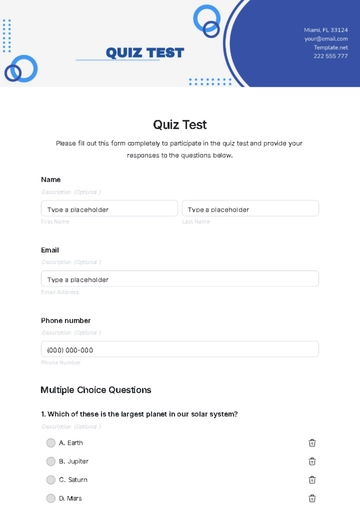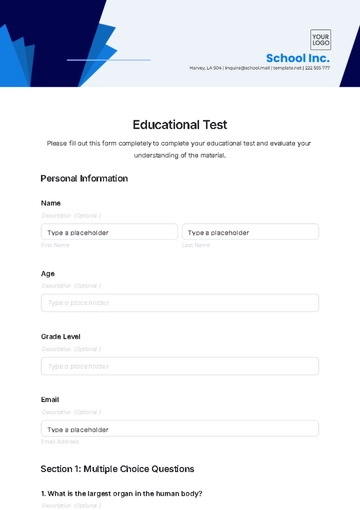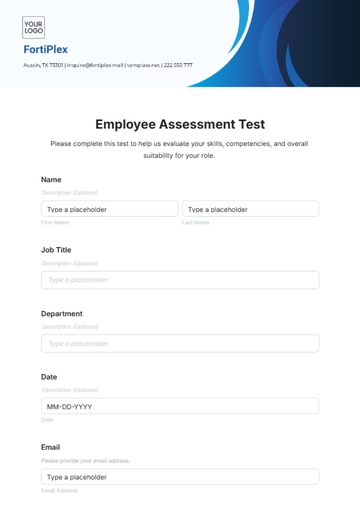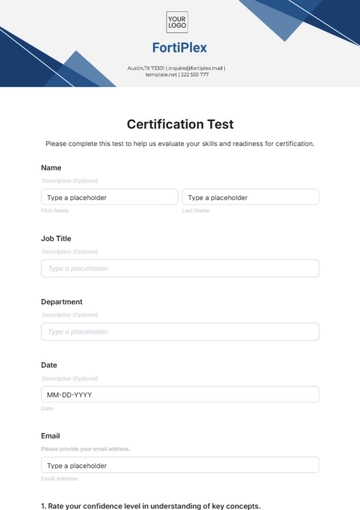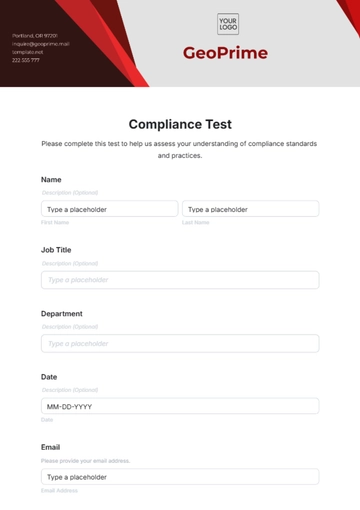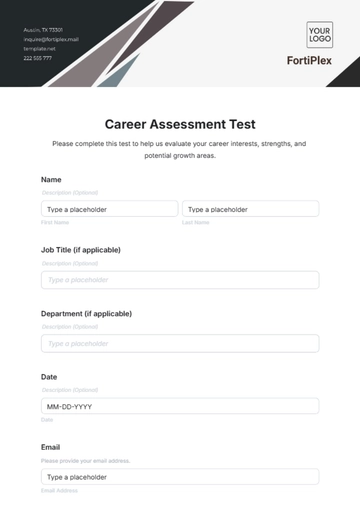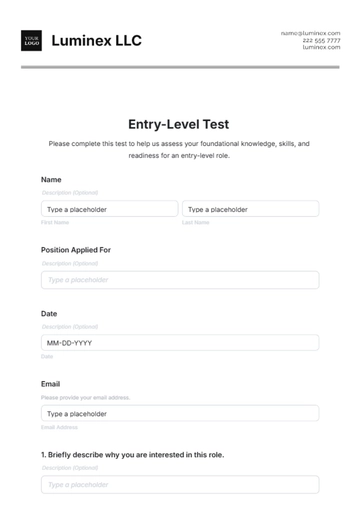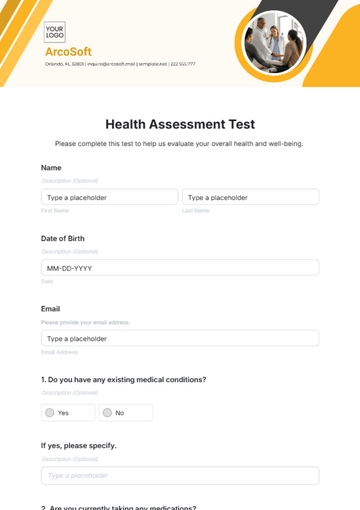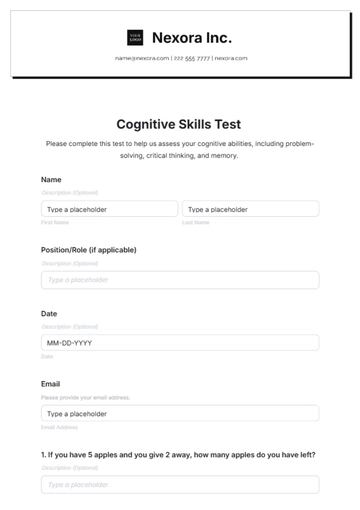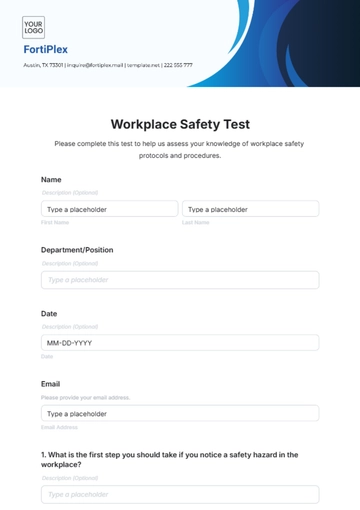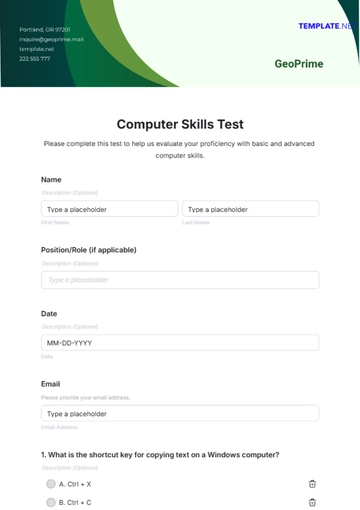Software QA Test Plan
I. Introduction
A. Overview
This Software QA Test Plan outlines the strategy, objectives, and resources for testing [Software Application Name]. Prepared by [Your Name], this plan ensures that all aspects of the software are verified to meet the required quality standards.
B. Objectives
Ensure the software meets the specified requirements.
Identify and resolve defects.
Verify that the software performs as expected across different environments.
Validate that the software is user-friendly.
C. Scope
This test plan covers functional, non-functional, and regression testing of the software developed by [Software Application Name].
II. Project Roles and Responsibilities
A. Team Members
Role | Name | Responsibilities | Contact Information |
|---|
QA Manager | [Your Name] | Oversee testing processes | [Your Email] |
Test Lead | [Test Lead Name] | Plan and coordinate test activities | [Test Lead Email] |
Tester(s) | [Tester Name] | Execute tests and log defects | [Tester Email] |
Developer(s) | [Developer Name] | Fix defects and issues | [Developer Email] |
Project Manager | [Project Manager] | Project oversight and resource allocation | [Project Manager Email] |
III. Testing Strategy
A. Test Types
Functional Testing
Validate that all functionalities work as expected.
Includes unit tests, integration tests, and system tests.
Non-Functional Testing
Performance Testing: Ensure the software performs efficiently under various loads.
Security Testing: Verify the software's resilience to security threats.
Usability Testing: Evaluate the software's user-friendliness.
Regression Testing
B. Test Levels
Unit Testing: Conducted by developers during the development phase.
Integration Testing: Combines units and tests their interaction.
System Testing: The complete system is tested for compliance with the requirements.
Acceptance Testing: Final testing before release, often performed by end-users.
IV. Test Environment
A. Hardware
Component | Specifications |
|---|
Server | Intel Xeon, 128GB RAM, 2TB SSD |
Client Machines | Intel i7, 32GB RAM, 1TB SSD |
B. Software
Component | Version |
|---|
Operating System | Windows 15 |
Testing Tools | Selenium 5.0, JIRA 10.0, TestRail 8.5 |
Database | MySQL 8.0, PostgreSQL 14.0 |
V. Test Schedule
A. Milestones
Milestone | Start Date | End Date |
|---|
Test Planning | January 1, 2050 | January 15, 2050 |
Test Design | January 16, 2050 | January 31, 2050 |
Test Execution | February 1, 2050 | February 28, 2050 |
Defect Resolution | March 1, 2050 | March 15, 2050 |
Test Closure | March 16, 2050 | March 31, 2050 |
VI. Test Deliverables
A. Documentation
Document | Description |
|---|
Test Cases | Detailed cases outlining test scenarios and expected outcomes. |
Test Scripts | Scripts detailing the steps to be executed during testing. |
Test Data | Data sets to be used in testing scenarios. |
Test Execution Reports | Reports detailing the execution of test cases and their outcomes. |
Defect Reports | Reports documenting identified defects and issues. |
Test Summary Reports | Summarized reports outlining the overall test results. |
VII. Risks and Contingencies
A. Risks
Risk | Description |
|---|
Incomplete Requirements | Requirements may lack clarity or be subject to change. |
Project Delays | Delays in development or testing may impact the schedule. |
Resource Constraints | Limited availability of resources may affect testing. |
Technical Challenges | Unexpected technical issues may arise during testing. |
B. Contingencies
Contingency | Description |
|---|
Regular Status Meetings | Regular meetings to track progress and address issues early. |
Buffer Time Allocation | Allocate extra time in the schedule to accommodate delays. |
Risk Mitigation Plan | Maintain a plan to address and mitigate identified risks. |
VIII. Approval
Signatures
Name | Role | Signature | Date |
|---|
[Your Name] | QA Manager | 
| March 31, 2050 |
[Project Manager Name] | Project Manager | 
| March 31, 2050 |
Plan Templates @ Template.net
